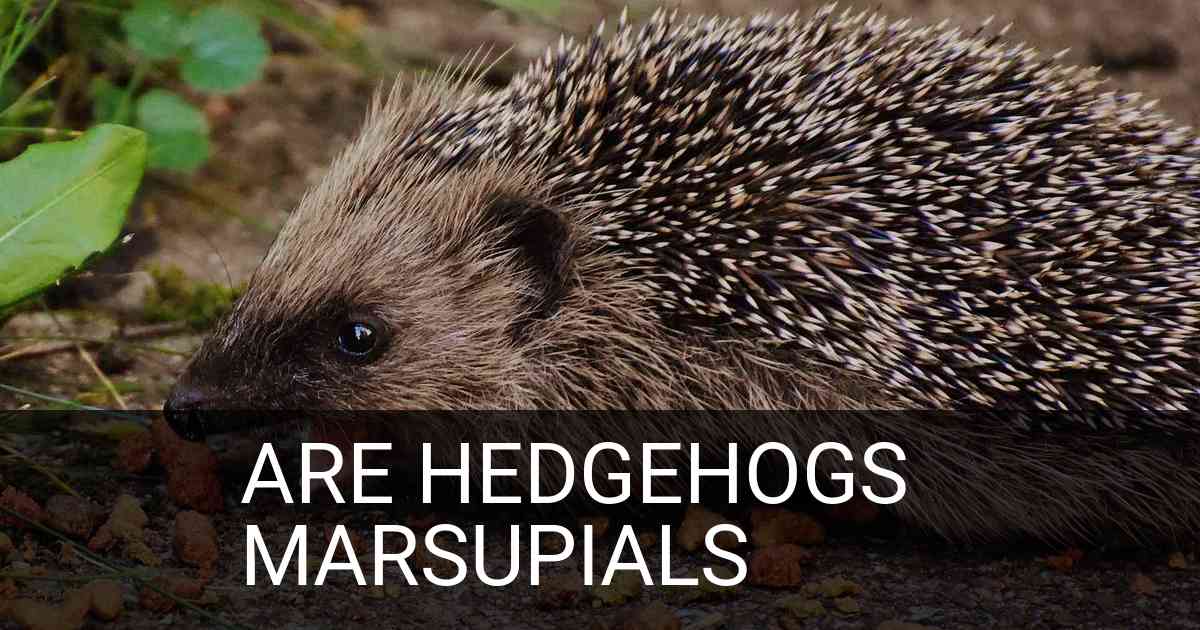
Hedgehogs are fascinating little creatures that have been around for millions of years, and they have captivated the imagination of people throughout history. But despite their popularity, a lot of people don’t know much about hedgehogs; in particular, many people wonder whether or not hedgehogs are marsupials. In this article, we’ll explore what makes a marsupial and take a look at the evidence to answer the question: Are Hedgehogs Marsupials?
Are Hedgehogs Marsupials?
No, hedgehogs are not marsupials. A marsupial is a mammal that has a pouch in which its young develop after birth. The best-known examples of marsupials are kangaroos, koalas, and opossums.
What Makes a Marsupial?
Marsupials have several unique characteristics that differentiate them from other mammals:
- Pouch: All true marsupials have a specialized pouch on their abdomen called the “marsupium” in which they carry their young for development until they reach maturity.
- Placenta: Rather than having an external placenta like most placental mammals do, marsupials instead rely on an internal placenta to nourish their young while they’re developing.
- Birth: Marsupials give birth much earlier than other mammals; typically within 2 months of conception.
Types of Hedgehogs
Hedgehogs are small spiny mammals belonging to the family Erinaceidae. There are 17 different species of hedgehog, all found in Europe, Asia and Africa.
African Pygmy Hedgehog
- Scientific Name: Atelerix albiventris
- Size: 4-8 inches long
- Description: The African pygmy hedgehog is a small, nocturnal mammal with brownish fur on its back and white or cream-colored fur on its belly. Its face is covered in short spines that point backwards. It has a pointed snout with a black nose and ears located near the top of its head. The feet have five toes each with sharp claws for digging burrows.
Long Eared Hedgehog
- Scientific Name: Hemiechinus auritus
- Size: 8-12 inches long
- Description: Long eared hedgehogs have longer ears than other types of hedgehog, as well as more densely packed spines on their backs. Their faces appear more triangular than other species, and they also have shorter legs. They can be found in parts of North Africa and Southwest Asia.
Hairy-Footed Hedgehog
- Scientific Name: Paraechinus aethiopicus
- Size: 7-9 inches long
- Description: The hairy-footed hedgehog is named for the tufts of hair it has on its hind feet. The back is covered with thick, dark brown fur and the belly is white or yellowish. This species is native to Northeastern Africa and Southwest Asia, but can also be found in some parts of Southeastern Europe.
The Debate Around Whether Hedgehogs Are Rodents or Not
Hedgehogs are often confused with rodents, and there is a lively debate over whether they should be classified as such. While hedgehogs have some common features with rodents, their unique physical characteristics put them in a category of their own.
Similarities to Rodents
Hedgehogs share several similarities with rodents. For example, they both have small eyes, long snouts, and four legs. They also eat similar foods such as insects, fruits and vegetables. In addition, hedgehogs can climb trees like some species of rodents.
Distinctive Features
However, hedgehog’s have distinct physical traits that set them apart from rodents. These include:
- Soft spines covering the body instead of fur or hair.
- A short tail compared to most rodents.
- Their ability to curl up into a tight ball when threatened.
These three features make it clear that hedgehog’s belong in a different family than rodents.
It is clear that while hedgehogs share certain traits with rodents, they are still an animal distinct from the rodent family. As such, they should not be classified as rodents but rather given their own classification.
The Unique Monotreme: The Hedgehog
The hedgehog is a small, spiny mammal found in many parts of the world. It belongs to the family Erinaceidae and is one of only two species belonging to the order Monotremata, or “single-holed” animals. This unique animal has a long history of being used as both pets and pest control.
Physical Appearance
Hedgehogs have round bodies covered with sharp quills which are made up of keratin (the same material that human hair and fingernails are composed of). They vary in size from about 4 inches (10cm) to 14 inches (35 cm) depending on the species. Hedgehogs can come in several different colors including browns, grays, blacks and even albino. Their undersides are usually white or cream colored.
Behavior & Diet
Hedgehogs generally live solitary lives but will form small groups when food is plentiful. They are nocturnal animals meaning they hunt during the night time hours for insects like snails, earthworms, slugs and beetles. In addition to these invertebrates they may also eat fruits, vegetables, eggs and carrion.
Reproduction:
Mating Season:
In temperate climates hedgehog mating season takes place between April – September while those living in tropical regions may breed year round.
Gestation Period:
Length of Gestation Period:
On average it takes 35 days for a female hedgehog to give birth after mating.
Conclusion
In conclusion, it is clear that hedgehogs are not marsupials. They are not mammals of the order Marsupialia and they do not possess any of the characteristics associated with being a marsupial. However, their unique characteristics make them highly interesting animals to learn about and appreciate in our world today.

